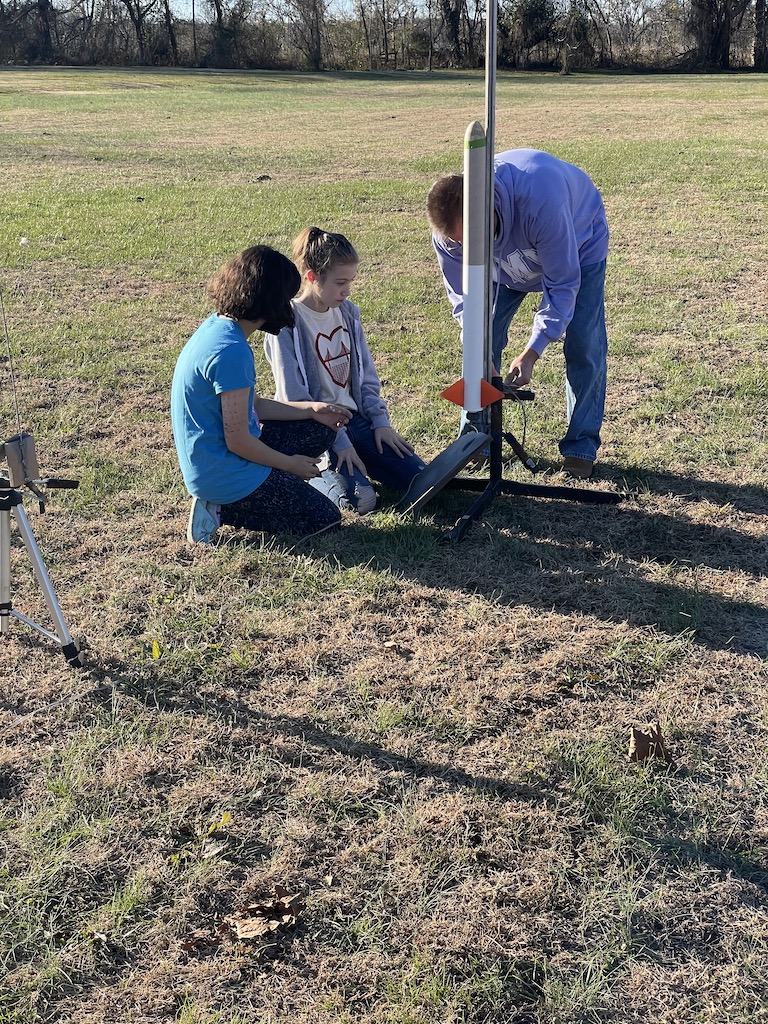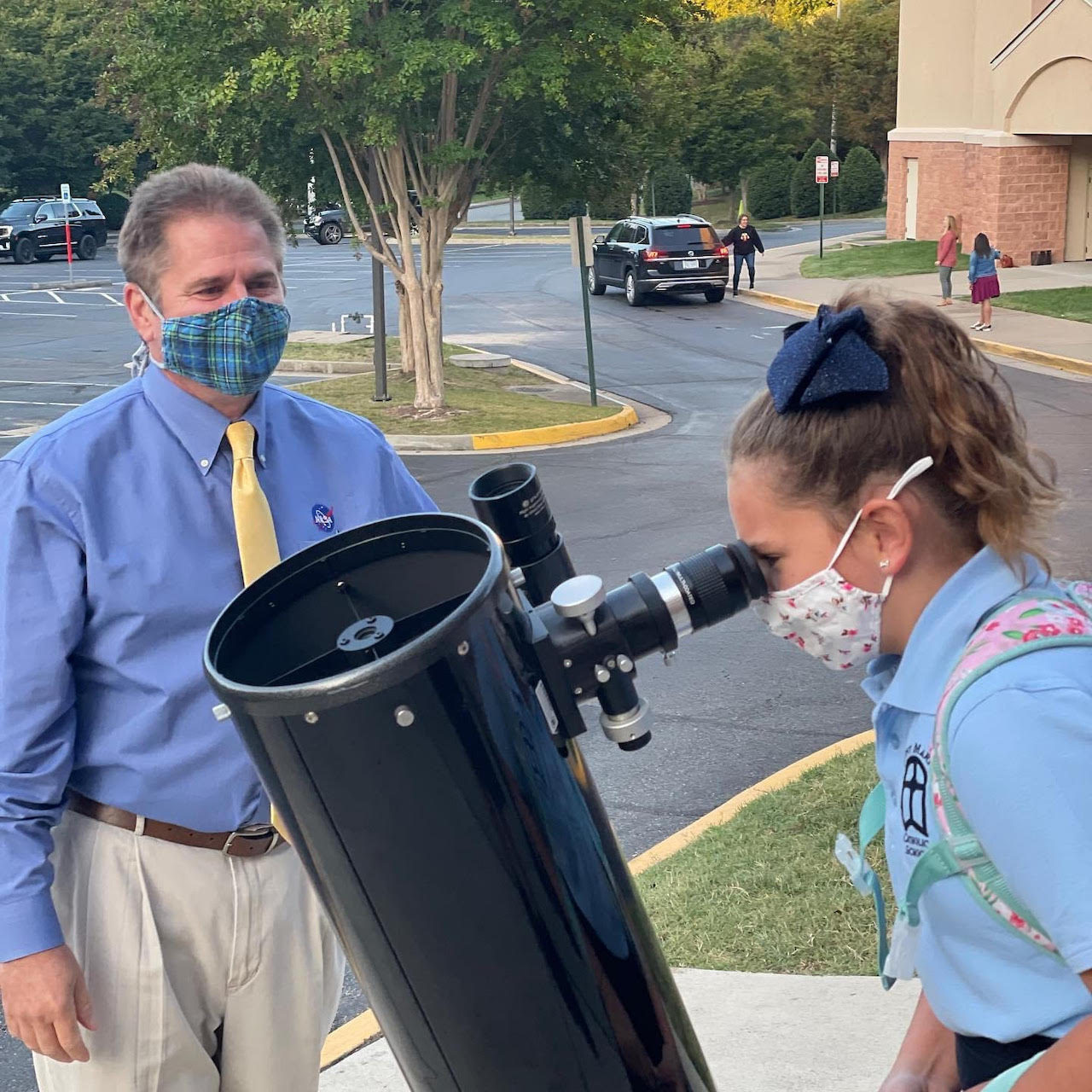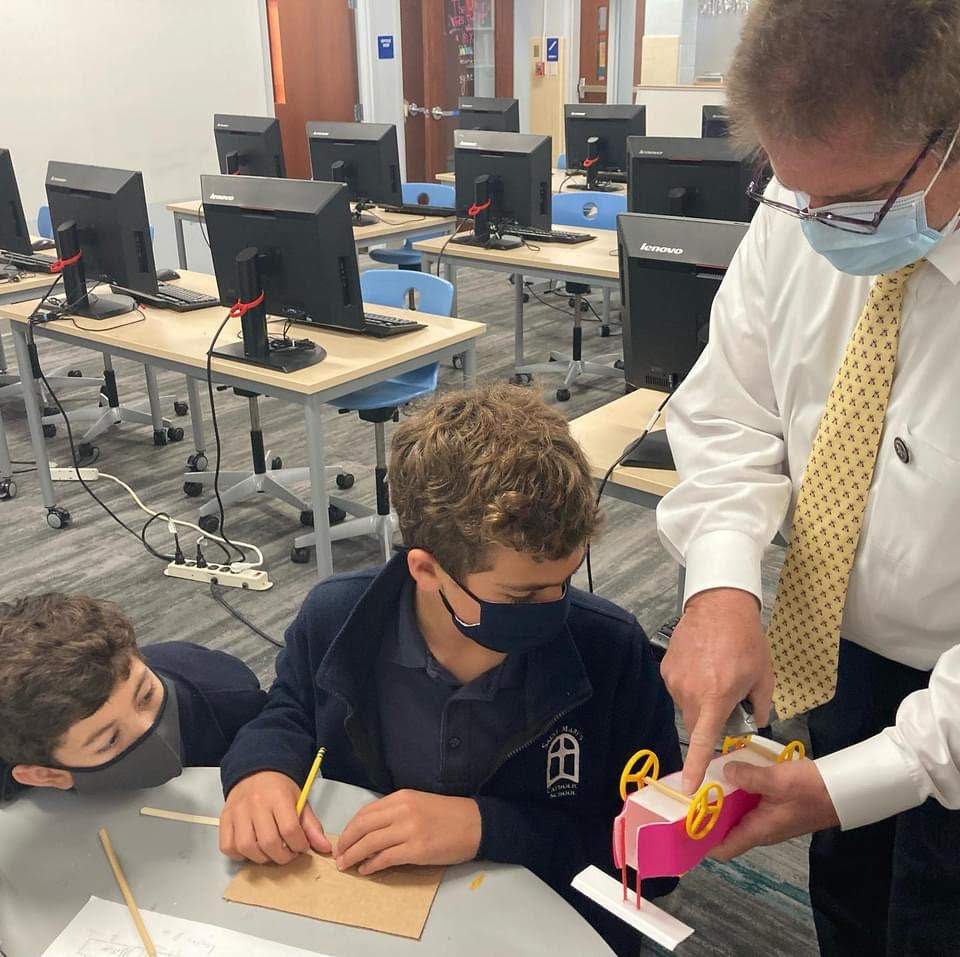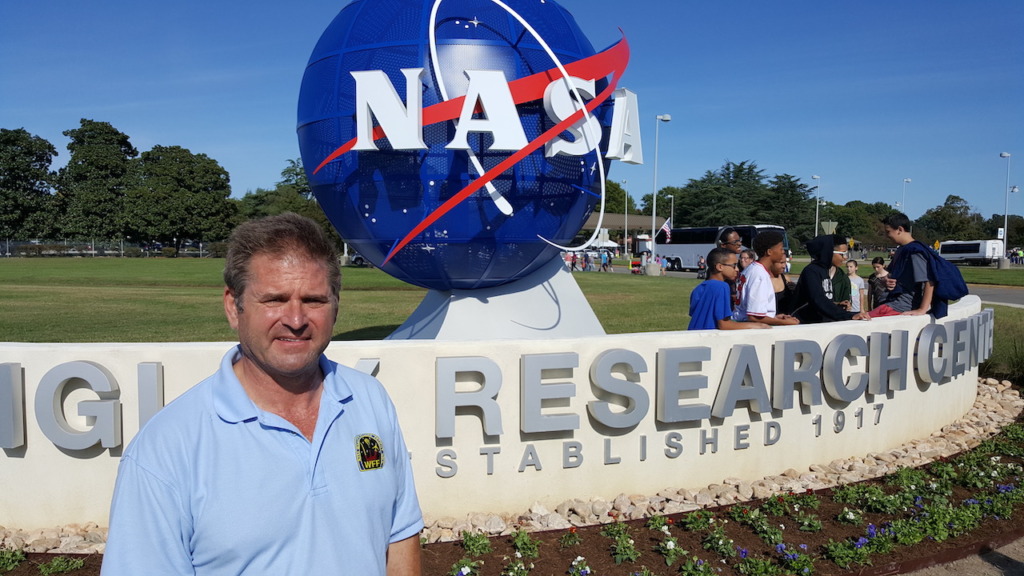Keeping God at the center of science class
Technology teacher Peter Tlusty remembers watching the Apollo space missions as a child and dreaming, like so many others at the time, of becoming an astronaut. Though Tlusty has never travelled to space himself, some of his classroom experiments have. He has shared his love of STEM (Science, Technology, Engineering, and Math) with students at Saint Mary’s Catholic School in Richmond for the past six years, and recently participated in NASA’s Cubes in Space program to launch his students’ experiments into the mesosphere and beyond.
On Feb. 8, he received a national teacher innovation award from FACTS, an educational management support company that assists thousands of schools around the globe. According to the FACTS website, these awards “shine a light on the creative teachers making a difference through bold initiatives, commitment to their students, and support of FACTS’ mission to make educational dreams possible through service and technology.”
Path to the front of the class
Tlusty’s journey to becoming a STEM teacher was a winding one. He played the trumpet in a Motown band for a while, until he realized he was better at running lights and sound for the group than actually playing in it. He later helped his brother at his recording studio, which led him to learn more about computers. Then he started designing and building handcrafted furniture, which morphed into a home improvement contracting business. Though these odd jobs may seem unrelated, they all had one thing in common: they each required him to work with his hands.
The son of two teacher parents, Tlusty eventually pursued a job in the education field himself, earning a degree in Early Childhood Education. Again using his hands, he incorporated many interactive activities for his students to help them learn by doing. He was teaching fourth grade at another local Catholic school when he saw an advertisement for a technology teacher at Saint Mary’s.

“I was an elementary school teacher who included a lot of STEM activities in my classroom and liked to tinker with computers and thought, ‘Why not [apply]?’ I guess I fooled them into hiring me, and I think it may have worked out okay for the two of us,” he said. This would prove to be an understatement, as Tlusty, affectionately known as “Mr. T” around school, has become beloved by students and colleagues alike.
Outside the box and out of this world
“Mr. T is a great teacher,” proclaimed eighth grade student Lourdes Olivencia. “He makes class both fun and challenging by allowing us to share our ideas and always encouraging us to think outside the box. He always comes up with a new design problem that we have to solve as a group. His class has allowed me to discover my passion for the engineering design process.”
Principal Brandon Hess spoke about how Tlusty works to build strong relationships with his students, often arriving early to greet them before school begins and staying late to lead afterschool activities. “Mr. T inspires students through challenges that are literally ‘out of this world,’” Hess said. “Students see these challenges as impossible, but Mr. T provides them with the tools and confidence to make them possible.”
One example of making the impossible possible is the school’s participation in the Martian 3.0 program. This program, sponsored by AIAA (American Institute of Aeronautics and Astronautics), tasks students with designing and building a system that can grow food on Mars.
“This was the challenge in our eighth-grade engineering design class,” explained Tlusty. “We collaborated with several schools across the nation and around the world. We combined this project with our most recent Cubes in Space project where we sent vegetable seeds up on a NASA high altitude science balloon mission trying to protect them from the rigors of space.”
Next, they will test the seeds in Martian Greenhouse hydroponic grow systems, which use nutrients in water instead of soil to grow plants. It is the hope that one day a method will be discovered capable of sustaining life on Mars.
Science and God are ‘intertwined’
A constant core component of Tlusty’s classes is faith. He sees science and God as inseparably intertwined, and recognizes the Catholic Church’s important historic role in astronomical, medical, and scientific breakthroughs. He often adds an “R” for Religion and an “A” for Art to “STEM” to make “STREAM,” as he sees it all interconnected.
“I always stress the role of the Catholic Church through history and its leadership in science discovery,” he said. “The Museum of the Bible in Washington, D.C., just opened a new exhibit called ‘Scripture and Science: Our Universe, Ourselves, Our Place.’ It includes Buzz Aldrin, who took Communion on the Moon; George Lemaitre, who was a Catholic priest and is known as the Father of the Big Bang Theory; and Mary Kenneth Keller, a Catholic nun who also was a computer science pioneer.”
Tlusty enjoys and welcomes classroom discussions about the role of religion in science. “When presenting in class about the Webb Telescope and its mission to see into the past and get a perspective on the beginnings of the universe, we had the most amazing discussion about the Big Bang Theory and Creationism. A student asked, ‘Didn’t God create the Universe?’ Another student put it brilliantly that God said ‘Let there be light,’ and then, boom, there was the Big Bang.”
Resources that broaden the classroom
Tlusty is active in many STEM organizations that give him access to a wide range of educational resources. The Civil Air Patrol, of which Tlusty is a member, has provided flight simulators for his classroom. Tlusty explained that these simulators consist of airplane controls similar to those found in real airplanes, except they are plugged into a computer. Students can use them to learn how to fly a plane from their desks.

His affiliation with GAVRT (Goldstone Apple Valley Radio Telescope) gives Tlusty access to an enormous radio telescope capable of receiving data related to the sun, Jupiter, black holes, and other celestial entities. This telescope can be controlled directly from his computer and literally brings the galaxy into the classroom.
Tlusty also shares his love of STEM outside of the Saint Mary’s campus. As a volunteer NASA Solar System Ambassador, Tlusty gives presentations about NASA missions, judges school science fairs and STEM competitions, assists with school astronomy nights, and tries to engage the general public with all things NASA. Tlusty is also a member of the National Association of Rocketry and heads a local chapter dedicated to student launches. He mentors students, teaches rocket design, and judges flight competitions.
“Mr. Tlusty has always been an inspiration of mine,” said one of his former students, Ana Reveles Leon. “He has been with me since middle school and high school and not only has he taught me about STEM but how to grow as a person.
“Even at 11 years old he exposed me to the rigors of being a professional in this field and made sure to push me to my best version of myself,” she said. “I am so incredibly proud that he is finally being recognized for his work. Mr. T is passionate about his work but more passionate about helping his students succeed.”

It’s never too early to learn about STEM, according to Tlusty, whose students range from junior kindergarten through 8th grade. His youngest students learn about planes by identifying plane parts (wings, motor, propeller, etc.) and learning what they each do. Tlusty presents basic aeronautic concepts in an easy-to-understand manner and then has students do a hands-on activity by building simple gliders out of foam plates and flying them around the classroom.
Concepts and activities get more complex as the students age, with Tlusty introducing engaging activities to pique the students’ interest at every level. Students get the opportunity to work with 3-D printers, computers, drones, coding, and more. Extracurricular clubs include the beforementioned Cubes in Space, a competitive international program that allows students ages 11-18 to work with NASA, design and build various experiments that fit in 4 cm x 4 cm cubes, and see them launched on a real shuttle into space.
From coding to flying, simulators to space, giant telescopes to tiny cubes, Tlusty believes everyone can benefit from STEM.
“I always say these students do great things and it makes me look good,” he said. “A lot of the STEM stuff we do is hard work and often challenging work. We do have fun in the process though. I have faith in these kids and we have faith in God. What could be better?”

